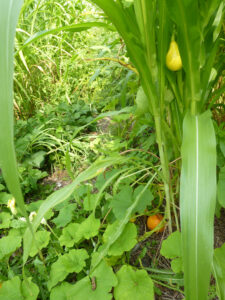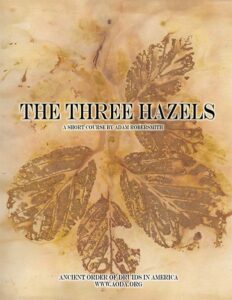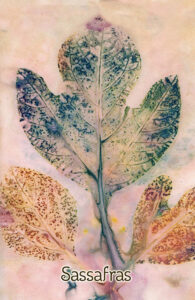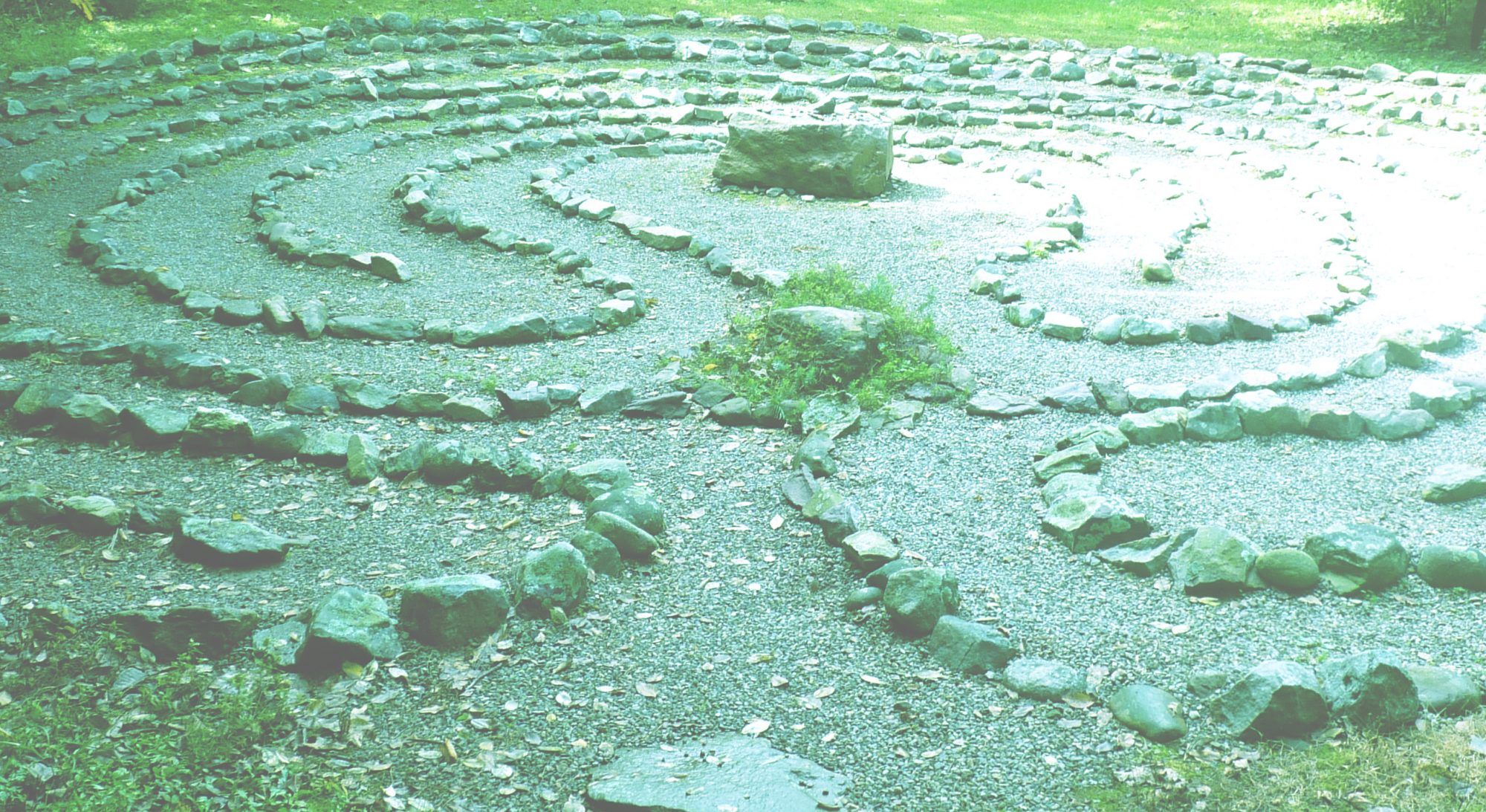AODA’s third degree is a self-designed project that advanced members of the Order undertake. Each third-degree is unique and represents a considerable work that is in line with Ovate, Bard, or Druid practices. The following offers a showcase of recent third-degree projects by members of the AODA. For more on AODA’s third-degree curriculum, please visit this page.
Claire Schosser, Ovate Adept: Locally-Produced Soil Amendments
 For my Ovate project for the Adept degree in AODA, I sought to determine if three home-produced soil amendments, namely worm castings, wood ashes, and urine, could be used to replace, in part or in whole, purchased soil amendments for the purpose of re-mineralizing vegetable garden soil. Using home-produced soil amendments would reduce the negative impacts on the Earth of using depleting mined minerals and fossil fuels to amend garden soil and would save money as well. In addition, by using materials that would otherwise enter the waste stream to produce food, it would reconnect my garden to the Earth’s biogeochemical cycles, which would connect me more deeply to the food that I eat and the land on which I grow it as well as benefitting the other beings who also depend on those cycles.
For my Ovate project for the Adept degree in AODA, I sought to determine if three home-produced soil amendments, namely worm castings, wood ashes, and urine, could be used to replace, in part or in whole, purchased soil amendments for the purpose of re-mineralizing vegetable garden soil. Using home-produced soil amendments would reduce the negative impacts on the Earth of using depleting mined minerals and fossil fuels to amend garden soil and would save money as well. In addition, by using materials that would otherwise enter the waste stream to produce food, it would reconnect my garden to the Earth’s biogeochemical cycles, which would connect me more deeply to the food that I eat and the land on which I grow it as well as benefitting the other beings who also depend on those cycles.
The results I obtained from experiments in my garden from 2018 through 2021 suggest that I can use urine to supply most of the nitrogen needs of the vegetables and grains that I grow with attention to applying the proper amount when the crops are actively growing. Urine can replace the seed meals that I must procure from offsite and that may become scarce or unavailable as supplies of natural gas, one of the feedstocks for the nitrogen fertilizer used in agriculture, are depleted and agriculture turns to the seed meals as a nitrogen source. They also suggest that I can use wood ashes to eliminate the phosphorus deficit in my soil without adversely affecting the pH and thereby the availability of other minerals. In one bed in the 2021 garden where I used both urine and wood ashes, the yields were comparable to using purchased materials from offsite (cottonseed meal and rock phosphate). Thus I conclude that these two home-produced materials can replace the corresponding purchased materials for soil re-mineralization. Using urine and wood ashes in the garden re-connects them to their appropriate cycles, turning two potential problems into two garden solutions.
The 2022 edition of Trilithon includes a detailed article describing this project. My blog Living Low in the Lou includes discussions of each year’s results during the project as well as the results of a larger decade-long garden research project that includes my Ovate Adept project.
Adam Robersmith, Druid Adept: The Nine Hazels
 In my over twenty-five years of work with Druids and Pagans, I have seen a pair of concurrent needs: the teaching of magic that draws on both imagination and kinesthetic learning and the need to support bodily awareness and health. Much has been written and said about the dichotomy of body and spirit—physicality and energetics—in our broader Western culture. Many of us struggle with time enough (or discipline enough) to practice any one thing deeply, much less exercise and magic. In Druid fashion, I have sought a third thing that could unite these into a useful, practical, manageable whole.
In my over twenty-five years of work with Druids and Pagans, I have seen a pair of concurrent needs: the teaching of magic that draws on both imagination and kinesthetic learning and the need to support bodily awareness and health. Much has been written and said about the dichotomy of body and spirit—physicality and energetics—in our broader Western culture. Many of us struggle with time enough (or discipline enough) to practice any one thing deeply, much less exercise and magic. In Druid fashion, I have sought a third thing that could unite these into a useful, practical, manageable whole.
My experience with qigong and tai chi as a practitioner (and as the partner of an expert qigong and tai chi practitioner and teacher) led me to create the Nine Hazels: a qigong form that would support the learning of basic Western magical energy practices, provide health benefits, and encourage a sense of embodiment as a spiritual, magical, natural being. I spent approximately seven years developing, practicing, refining, and selectively sharing the qigong set, testing it myself and with the help of others to make sure it was useful in practice, not just coherent in theory. When I was confident that it could be taught and used well, I offered it to the Grand Grove as my 3rd Degree Druid project. Since then, I have published the intro and first movement in Trilithon, created this short course of the first Triad for the AODA, and have been selling the full manual with video and Zoom instruction. I am now building a website with text and video for people to learn the form.
Here is a link to the Three Hazels Short course.
Dana O’Driscoll, Bardic Adept: Voice of the Trees Ecoprinting Project and TreeLore Oracle
 As a visual artist and a druid, I’ve always been drawn to natural themes in my art and reflecting the natural world, particularly through working with trees. I’m also always looking for ways to be ecologically sensitive in my artistic media. In 2014, I discovered a new form of art pioneered by a woman named India Flint in Australia. Drawing upon traditional natural dying methods, she used various kinds of natural materials gathered in Australia to create what she called “ecoprints” on fabric. I bought one of her books and read about her basic fabric dying technique. She depended heavily on Eucalyptus and other hot-climate plants. After searching online, I found that this work has been taken up by various artists in the USA, primarily also in hot climates working with similar plant matter. A few other artists online had tutorials for printing on paper using fall leaves and boiling a bundle of paper in water to get the effect, also using her methods as a starting point. The general process involved a dye pot and strong plants that were not local to my region. I began this project to develop eco-printing techniques that are specific to my bioregion.
As a visual artist and a druid, I’ve always been drawn to natural themes in my art and reflecting the natural world, particularly through working with trees. I’m also always looking for ways to be ecologically sensitive in my artistic media. In 2014, I discovered a new form of art pioneered by a woman named India Flint in Australia. Drawing upon traditional natural dying methods, she used various kinds of natural materials gathered in Australia to create what she called “ecoprints” on fabric. I bought one of her books and read about her basic fabric dying technique. She depended heavily on Eucalyptus and other hot-climate plants. After searching online, I found that this work has been taken up by various artists in the USA, primarily also in hot climates working with similar plant matter. A few other artists online had tutorials for printing on paper using fall leaves and boiling a bundle of paper in water to get the effect, also using her methods as a starting point. The general process involved a dye pot and strong plants that were not local to my region. I began this project to develop eco-printing techniques that are specific to my bioregion.
The bardic eco printing project took five years to complete. The goals of this project were threefold: Develop a new artistic process for eco-printing local to my region; develop a regionally-based 30 card divination deck using local and sacred trees; and develop a spiritual practice surrounding this bardic art. This project extended my work in my two second-degree spirals (under the old curriculum: art and magic) through the development and exploration of a new artistic medium in my bioregion. In the end, I developed a sense of what to print, when to print it (eco-printing is very time-sensitive with the best prints typically happening in the fall months, although not for all trees and plants), what mordants to use, what paper to use, and developed some beautiful prints that I am now working to turn into a new divination deck.
The report I submitted to the Grand Grove can be found here: Voice of the Trees – Bardic Adept Project. Further, in 2022, I will be releasing the “TreeLore Oracle” which is the ultimate outcome of this project.
